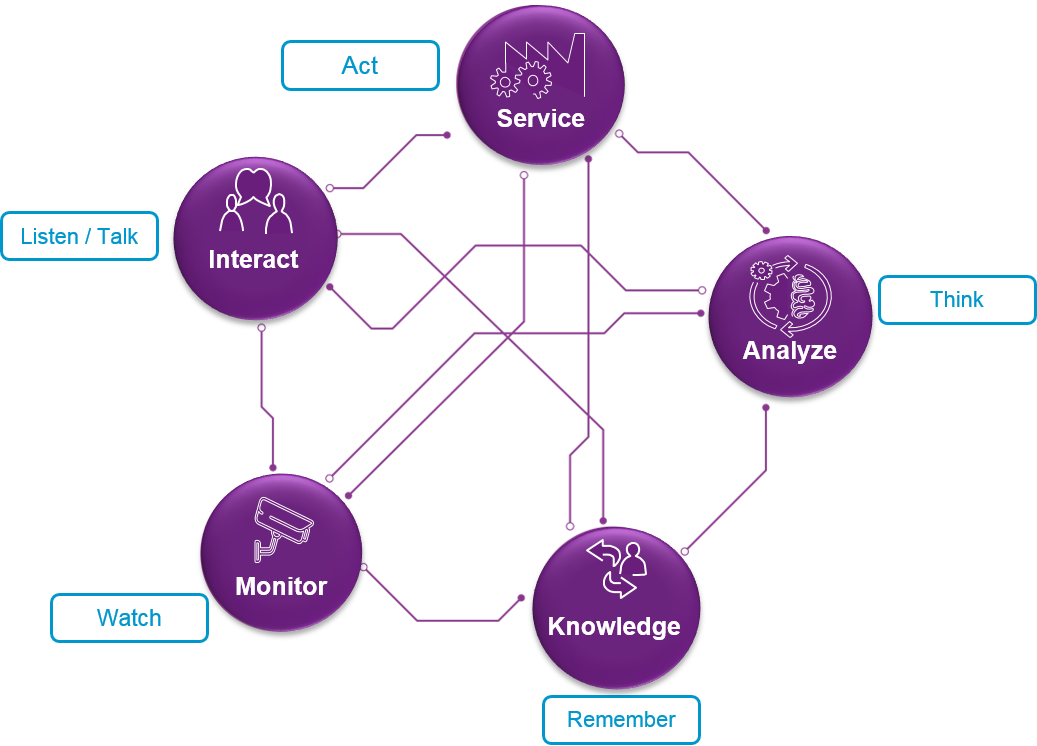Search posts by keywords:
Filter posts by author:
Related NEAT Reports
Other blog posts
posted on Sep 11, 2017 by John Willmott

Capgemini's Carole Murphy
Capgemini has recently redefined its framework for Intelligent Automation, taking an approach based on ‘five senses’. I caught up with Carole Murphy, Capgemini’s Head of BPO Business Transformation Services, to identify how their new approach to Intelligent Automation is being applied to the finance & accounting function.
JW: What is Capgemini’s approach to Intelligent Automation and how does it apply to finance & accounting?
CM: Capgemini is using a ‘five senses’ model to help explain Intelligent Automation to our clients and to act as a design framework in developing new solutions. The ‘five senses’ are:
- Monitor (watch): in F&A, for example, monitoring of KPI dashboards, daily cash in monitoring, customer dispute monitoring, etc.
- Interact (listen/talk): interacting with users, customers, and vendors, using a range of channels including virtual agents
- Service (act): automated execution, for example using RPA to address for example cash reconciliation, automated creation of sales invoices, exceptions handling
- Analyze (think): providing business analytics in support of P&L and cash flow and root cause analysis in support of process effectiveness and efficiency
- Manage knowledge (remember): a knowledge base covering SOPs, collection strategies, bank reconciliation rules etc.

Capgemini's 'Five Senses' IA model
JW: Why is this approach important?
CM: It changes the fundamental nature of finance operations from reactive to proactive. Historically, within BPS contracts, the vast majority of the process has been in ‘act’ mode, supplemented by a certain amount of analytics. The introduction of Intelligent Automation enables us to move to a much more rounded and proactive approach. For example, a finance organization can now identify what is missing before it starts to cause problems for the organization. In accounts payable, for example, Intelligent Automation enables an organization to anticipate utility bills, and proactively identify any missing or unsent invoices before, say, a key facility is switched off. Similarly, in support of R2R, transactions can be monitored throughout the month and the organization can anticipate their impact on P&L well in advance of the formal month-end close. In summary, Intelligent Automation enables ongoing monitoring and analysis rather than periodic analysis and can incorporate real-time alerts, such as to identify a missing invoice and find out why it wasn’t raised. So, a much more informed and proactive approach to operations.
JW: And what impact does IA have on the roles of the people within the finance function?
CM: Intelligent Automation lifts both the role of the finance function within the organization and those of the individuals within the finance function. One of the benefits of Intelligent Automation is that it improves how we share and deploy rules and knowledge throughout the organization – making compliance more accessible and enabling colleagues to understand how to make good financial decisions. Complex queries can still be escalated but simple questions can be captured and resolved by the ‘knowbot’. This can change how we train and continually develop our people and how we interact across the organization.
JW: So how should organizations approach implementing Intelligent Automation within their finance & accounting functions?
CM: One of the exciting elements of the new technology is that it is designed for users to be able to implement more quickly and easily – it’s all about being agile. Alongside implementing point solutions, the value will ultimately be how to combine the senses to bring the best out of people and technology.
We can re-think and re-imagine how we work. Traditionally, we have organized work in sequential process steps – using the 5 senses and intelligent automation we can reconfigure processes, technology and human intervention in a much more inter-connected manner with constant interaction taking place between the ‘five senses’ discussed earlier.
This means that it’s important to reimagine traditional finance & accounting processes and fundamentally change the level of ambition for the finance function. So, for example, the finance function can now start to have much more impact on the top line, such as by avoiding leakage due to missing orders and missing payments. Here, Intelligent Automation can monitor all transactions and identify any that appear to be missing. Similarly, it’s possible to implement ‘fraud bots’ to identify, for example, duplicate invoices or payments to give much greater levels of insight and control than available traditionally.
JW: What does this involve?
CM: There are lots of ways to start engaging with the technology – we see a ‘virtuous cycle’ that follows the following steps:
- Refresh: benchmarking of the finance function
- Reimagine: workshops involving design thinking, innovation lab, and Intelligent Automation framework to identify the ‘art-of-the-possible’
- Reengineer: incorporating eSOAR methodology and Digital GEM
- Roll-out: here it’s very important to take a very agile development approach, typically using preconfigured prototypes, templates, and tested platforms
- Run: including 24/7 monitoring.
Reimagining the F&A processes in the light of Intelligent Automation, rather than automating existing processes largely ‘as-is’ is especially important. In particular, it’s important to eliminate, rather than automate, any ‘unnecessary’ process steps. Here, Capgemini’s eSOAR approach is particularly important and covers:
- Eliminate: removing wasteful or unnecessary activities
- Standardize processes
- Optimize ERPs, workflow, and existing IT landscape
- Automate: using best-of-breed tools
- Robotics: robotizing repetitive and rule-based transactions.
Finally, it’s critical not to be scared of the new technology and possibilities. The return on investment is incredible and the initial returns can be used to fund downstream transformation. At the same time, the cost, and timescale, of failure is relatively low. So, it’s important for finance organizations to start applying Intelligent Automation to get first-mover advantage rather than just watch and wait.
JW: Thank you very much, Carole. That certainly ties in with current NelsonHall thinking and will really help our readership. NelsonHall is increasingly being asked by our clients what constitutes next generation services and what is the art-of-the-possible in terms of new digital process models. And finance and accounting is at the forefront of these developments. Certainly, design thinking is an important element in assisting organizations to rethink both accounting processes and how the finance function can make a greater contribution to the wider enterprise – and the ‘five senses’ approach helps to demystify Intelligent Automation by clarifying the roles of the various technologies such as RPA for process execution, analytics for root cause analysis, and knowledge bases for process knowledge.

Sep 12, 2017, by Rob